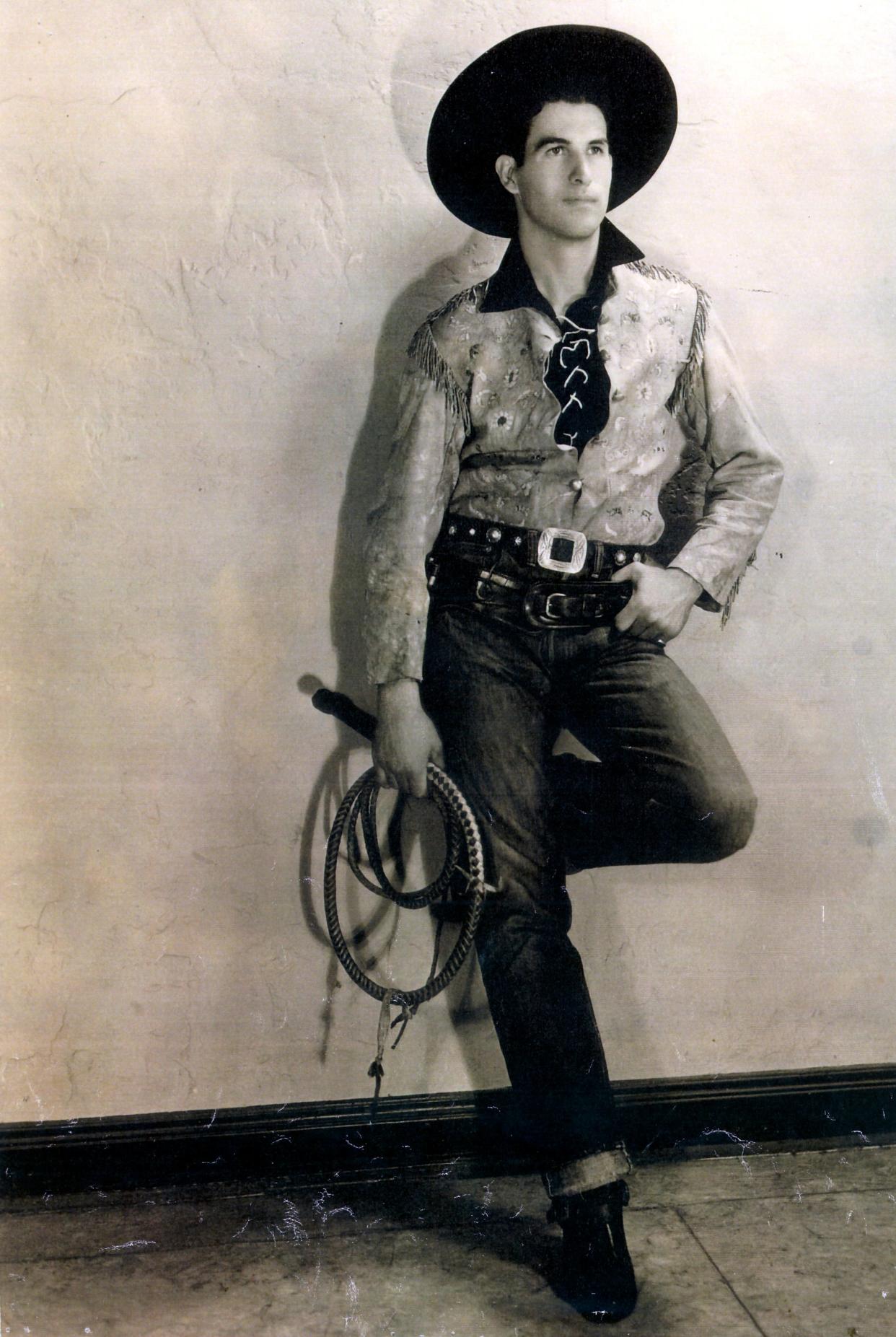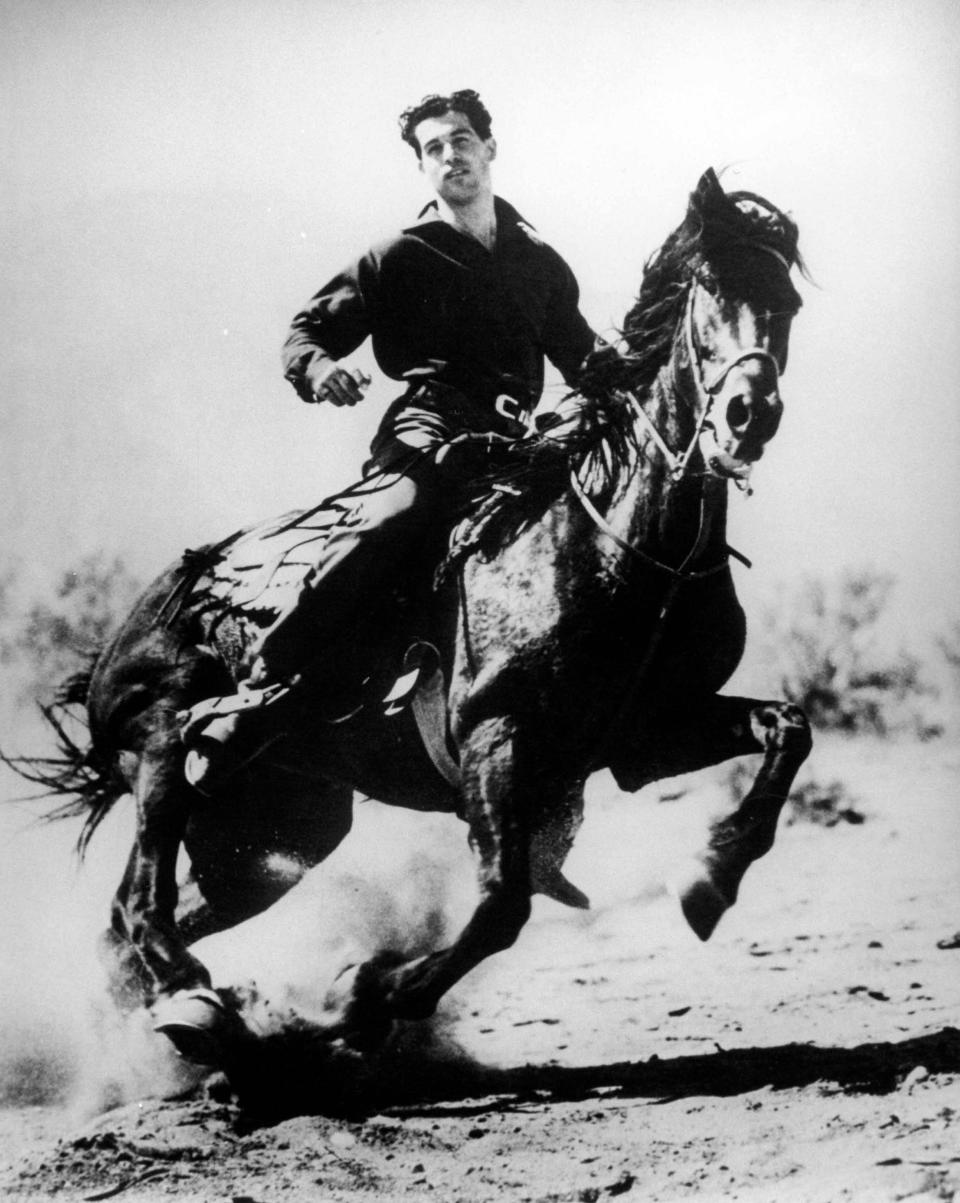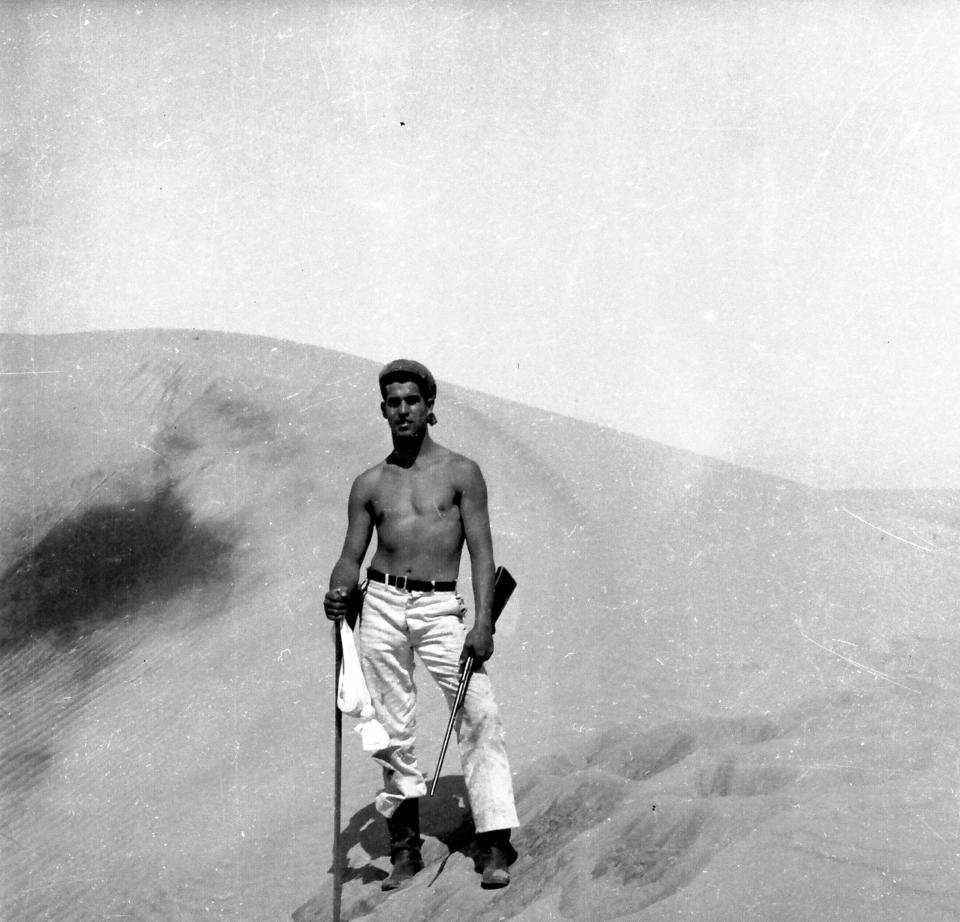Palm Springs history: Frank Bogert's journey from a Colorado ranch to Southern California

- Oops!Something went wrong.Please try again later.
The two young cowboys became fast friends after meeting at a rodeo in Ogden, Utah, in 1930. They would remain so for the rest of their lives. Gene Autry was running the event while establishing himself as a radio persona and only a few years away from becoming a major movie star who would go on to be a prominent business mogul. Frank Bogert was a contestant in the rodeo. Bogert’s future life would prove every bit as interesting as Autry’s and would come to define life in Palm Springs as one for cowboys.
The youngest of eight siblings, Bogert was born on the first day of 1910 on his father’s expansive ranch in Grand Mesa, Colorado. (His paternal ancestor, Jan Bogert, came to New Amsterdam in 1642 from Holland.) Bogert’s father left New York in the late 19th century and headed west to be a cowboy and rancher, landing on the largest flat-topped mountain in the world, where his youngest son would begin life.
The Bogert family built a house of redwood shipped from California. It was two stories, four bedrooms upstairs and one downstairs. Young Bogert learned to ride a horse at 5 years old and had his very own at age 12. He worked a variety of chores around the ranch, lifting hay, feeding cattle and branding some of the first Herefords in the United States. The brand was three half circles that would later be confused with the Civilian Conservation Corps during the Great Depression.
But it was the panic and depression in 1907 that changed things for the family. Bogert’s father was from a long-established, wealthy New York family. He owned apartments and had regular income. His cowboy and ranching adventures were easily subsidized. In 1907, his $200,000 on deposit at the Bank of Denver was completely lost. As the stock market crumbled the economy, a cousin managing the family business concerns had absconded with the money. The Bogert family was broke.
They lost the 250-square-mile ranch and moved to Palisade, below the wide, flat mountain, and bought a car dealership and peach orchard. The business was “Pick and Pack and Send.” Eventually the family moved to Grand Junction, where young Bogert attended Lowell School.
Bogert missed the ranch, horses and wide-open spaces. Life seemed less than before. An uncle had been writing and sending pictures about the glories to be found in California, and in 1923 the family moved to Los Angeles. They bought a house on Gramercy Place. Bogert attended the 24th Street grammar school (long since scooted south to make way for the 10 freeway), and then Los Angeles High School.
Six blocks west of the Bogert home was Rimpau Blvd and the end of Los Angeles civilization. Open fields stretched beyond all the way to the ocean. Bogert took riding and roping lessons from an accomplished horsewoman riding for miles in the open space that would become Los Angeles’ west side.
He played football at Los Angeles High School as a tackle. He was tall and athletic and could run fast but couldn’t catch a ball. No one ever threw a ball with him as a kid. He sat on the bench a good deal.
He didn’t care much for school and had no intention of going to college until falling in love with Marion Dale. She was headed to UCLA and he followed. She would go on to compete as a diver in the 1932 Olympics, earning a bronze medal in the 10-meter platform event.
Throughout his time in high school, Bogert worked. He had all sorts of odd jobs. Years later he would recall that he’d done so many jobs in his life that if he recounted them all, one might think he was a guy who couldn’t hold a job — a searing indictment of character in a time when America prided itself on work.
At age 16 he was regularly working at a stable in Wrightwood, putting his horseman skills to use. The owner had 20 horses each at Wrightwood, Big Pines at Jackson Lake. When the owner died, he left 60 horses to Rod Abbott and Bogert. The season in Wrightwood was over with the summer, closing on Labor Day. Abbott and Bogert would have to pay $3 each to put the horses in pasture. Bogert had been to Palm Springs and knew it as the only place in Southern Calfornia with a winter season. Abbott and Bogert drove their 60 horses from Wrightwood to Palm Springs in the fall of 1927. It took three days.

When they arrived, they built a shack for saddles, and set up a concession. Palm Canyon had all the attributes of a national park; Andreas Canyon had spectacular views and rushing water. The men would take groups of 10 to 12 wannabe-cowboy visitors on horseback up into the leafy canyons at $1 hour. Abbott kept the business going during the week, and Bogert would come to the desert each weekend to work.
The Desert Inn was the finest hotel in town, and visitors were eager to ride into the unique landscape. The El Mirador Hotel was finishing up construction. There were a few little, scattered motels. All together there was enough business to keep the horses occupied throughout the winter and the business afloat.
Jobs were scarce and life was hard. The horseback riding tourist trade in Palm Springs seemed the only going concern and Bogert was regularly spending more and more time in the desert. He didn’t quite graduate from UCLA.
By 1933, Bogert, an actual cowboy, was working at the El Mirador Hotel. Warren Pinney, of the prestigious Los Angeles law firm O’Melveny and Myers, handled the bankruptcy of the El Mirador Hotel caused by the Depression. The lawyer bought the hotel for $350,000 with borrowed money.

Bogert sold 30 of the horses to pay for camera equipment, keeping 30 for the rides into the canyons. He bought a Speed Graphic camera and learned to take publicity pictures. He had an ingenious idea.
He’d taken a neat picture of the head of the Cream of Wheat Company in a bathing suit by the pool in the middle of winter. He sent it to Minneapolis and the newspaper published it, luring many more visitors from the frozen Midwest. It had worked so well, it became a regular practice. Glamorous visitors were splashed across their hometown papers in bathing suits and western wear.
Wealthy patrons from across the country arrived regularly, unpacking their steamer trunks for the winter. Seduced by the fine weather and the fun of playing cowboy way out west, those visitors put Palm Springs on the map.
Tracy Conrad is president of the Palm Springs Historical Society. The Thanks for the Memories column appears Sundays in The Desert Sun. Write to her at pshstracy@gmail.com.
This article originally appeared on Palm Springs Desert Sun: Palm Springs history: Frank Bogert's Colorado-to-California journey

